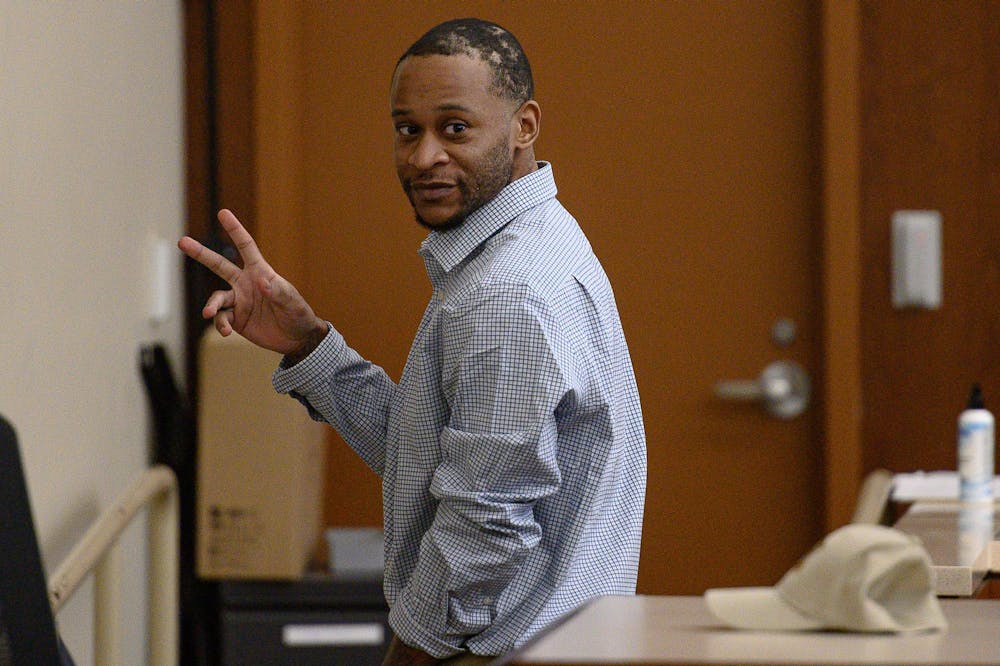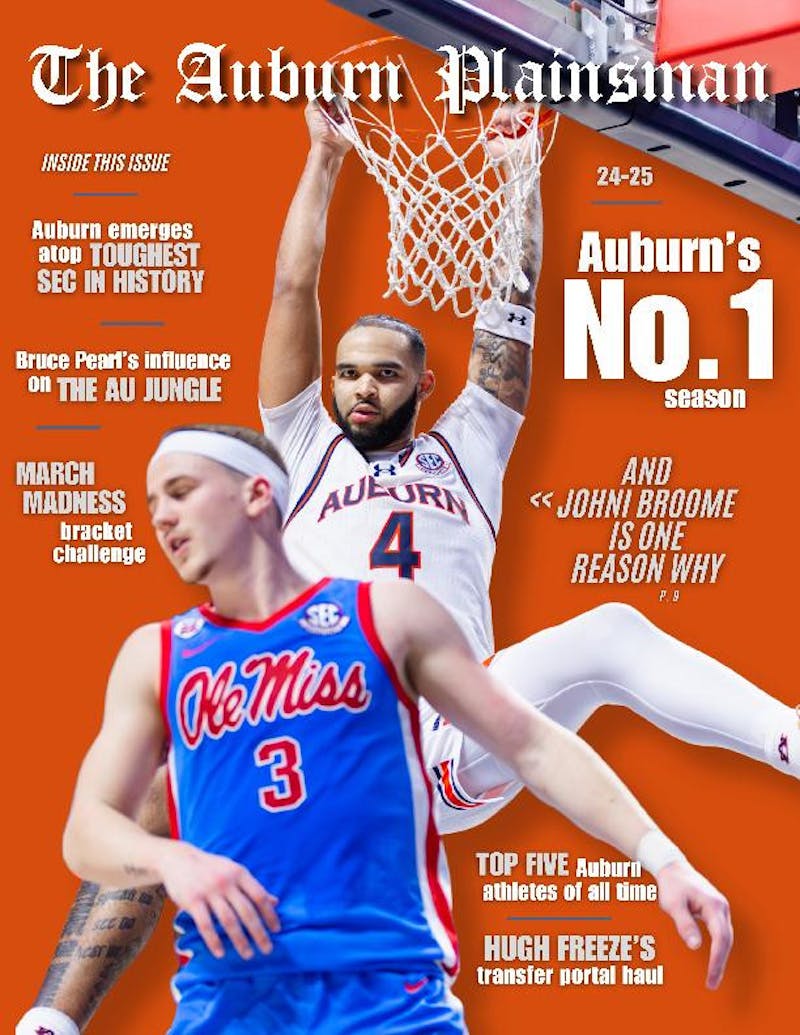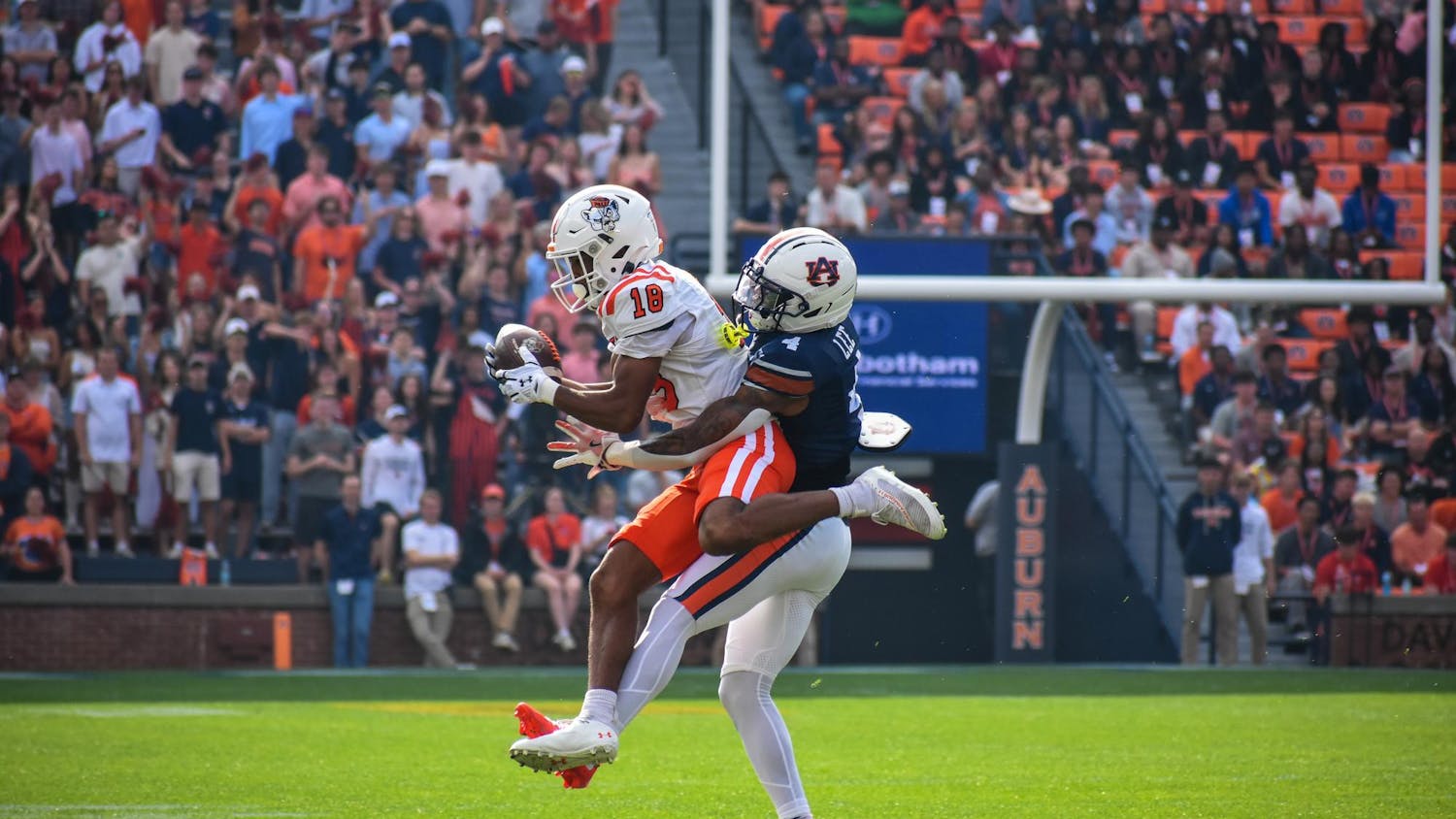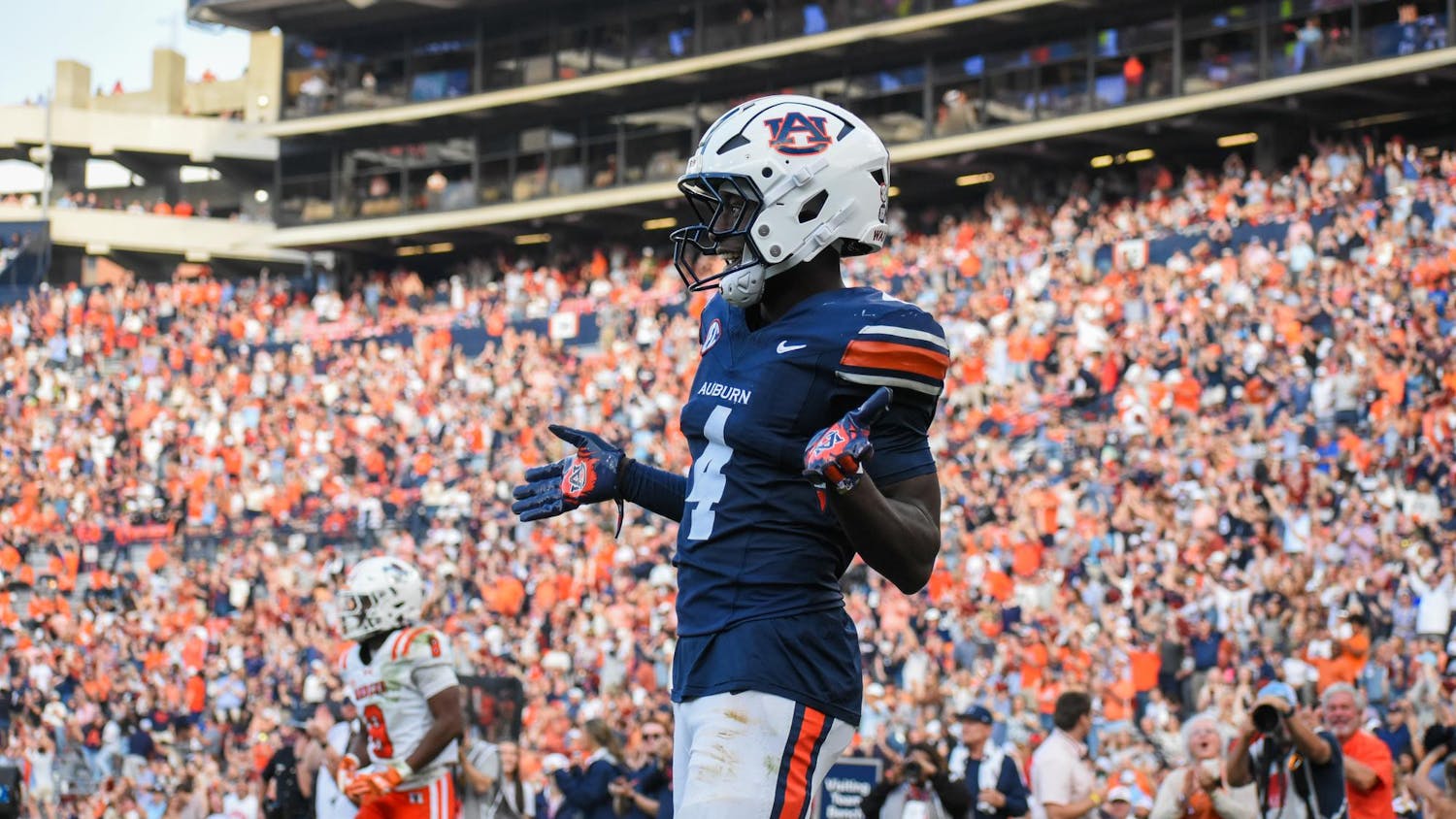On Oct. 15, 2025, the preliminary hearing for the murder of retired Auburn University professor, Dr. Julie Gard Schnuelle, was held at the Lee County Justice Center. The hearing determined that there was enough evidence against the accused, Harold Rashad Dabney III, to move to a grand jury. While the case is still in its early stages, lots of new information surrounding the case emerged in the hearing.
Overview of Evidence
- According to preliminary findings, the body appeared to have seven sharp force wounds: one in the neck, one in the center of the left forearm, one in between the thumb and pointer finger of her right hand and several in the chest.
- The body was found roughly 25 to 30 yards into the woodline behind a tree in the southwest part of Kiesel Park.
- The body appeared to have been dragged due to a blood trail and disturbance in the brush from two blood pools located on the trail.
- The murder weapon still has not been found.
- The victim’s phone, sunglasses, visor and dog leash were found roughly 10 to 15 yards from the body. The phone was in a different direction than the visor and dog leash, which were both covered in blood.
- A banking card in Schnuelle’s name was located in the crotch area of the defendant’s underwear.
- Video from the Kiesel Park surveillance camera show the suspect in a black and white t-shirt, black pants, sunglasses, a head covering resembling a beanie and black Adidas shoes with a distinctive reflective pattern. These clothes still have not been found.
- Dabney was apprehended in a white t-shirt, blue shorts and black Adidas shoes with a distinctive reflective pattern while carrying a towel following a disorderly conduct call from the pastor of St. Matthew Baptist Church.
- Footage on Briggs and Stratton’s surveillance cameras show Dabney walking towards the church via Beehive Road in the same clothing he was apprehended in.
- A fingerprint matching Dabney’s right thumb was found on the driver's side back door of Schnuelle’s truck.
Direct Examination
At 10 a.m., the hearing began with the presiding judge, the Honorable Jeffrey Gerald Tickal, briefly addressing the Court. The defendant entered the courtroom to sit with his attorneys, Artie Vaughn and Andrew Stanley. Lee County District Attorney, Jessica Ventiere, was then allowed to call her witness for questioning. Detective Taylor Clark of the Auburn Police Department was called to the witness stand and sworn in. Clark revealed new insights into the investigation and the case as a whole.
According to Detective Clark’s testimony, the investigation began on Sept. 6 2025, at around 1:54 p.m. when a witness called 911 to report pools of blood along the walking path at Kiesel Park as well as a deceased person found further in the woodline. Auburn Police responded to the scene where they found two pools of blood along the paved path. The responding officers also noticed disturbances and drag marks in the soil near the path leading to the woods. Officers followed the drag marks into the tree line where they discovered the body of Schnuelle.
Schnuelle’s body was located in the southwest region of Kiesel Park approximately 25 to 30 yards into the woods behind a tree. Clark testified that the victim was covered in blood and had apparent sharp force injuries. This was confirmed in the preliminary autopsy where the medical examiner determined that Schnuelle had seven distinct sharp force injuries. Officers also located some of Schnuelle’s belongings around where her body was found. Among those belongings were a dog leash, sunglasses, a visor and Schnuelle’s iPhone. The discovery of the body and nearby belongings led officers to check for surveillance footage of the area.
The officers located a security camera in the gravel parking lot by the main entrance to Kiesel Park on Chadwick Lane. The security camera revealed the last known movements of the victim. At around 9:30 a.m., surveillance footage showed that Schnuelle arrived at the main entrance of Kiesel Park in her red Ford F-150 truck. She parked in the gravel lot close to the street, got her dog out of the truck and entered the park to begin her regular walk. She was last seen on the surveillance footage at 9:42 a.m. when she left her vehicle.
Approximately one hour later, at 10:28 a.m., a Black male in a black and white shirt, black pants and black Adidas shoes with a distinct reflective pattern was seen exiting the park from the direction where the deceased was found. He pulled out a key fob and pressed buttons on it, causing the lights on Schnuelle’s truck to flash. He then jogged over to the vehicle, got in and drove away.
Auburn Police made efforts to locate the truck by utilizing flock cameras or automated license plate readers placed around the Auburn area. At 10:37 a.m. on Sept. 6, 2025, the cameras located a red Ford F-150 with license plates matching Schnuelle’s vehicle around the intersection of Wire Road and Cotton Valley Lane. The truck was finally located on Sept. 7, 2025 near the 6500 block of Wire Road. The truck was approximately 100 to 150 yards into the woods in a creek bed. Auburn Police had to cut down trees to reach the truck.
Once Schnuelle’s truck was retrieved, special investigators from state law enforcement began to process evidence from the vehicle. Inside the truck, investigators discovered blood on the front driver’s seat and the steering wheel. On the exterior of the vehicle, forensic scientists discovered a latent finger print on the back driver’s side door. The print was collected and eventually compared to Dabney’s where it was found to be a match to his right thumb.
On Sept. 7, 2025, the Auburn Police Department responded to a disorderly conduct call at the 2300 block of Beehive Road. Responding officers apprehended Harold Rashad Dabney III wearing a white shirt, blue shorts, Black Adidas running shoes with a distinct reflective pattern and no socks. He also had visible scratch marks on his body. Officers searched Dabney’s person before taking him into custody. In Dabney’s pockets, officers located a Cash App Card, a surgical mask, cash and sunglasses. In Dabney’s underwear, specifically in what Clark described as the crotch area, the officers located Schnuelle’s banking card.
Cross-examination
After the prosecution finished its examination, the defense, led by Andrew Stanley, began the cross-examination of Detective Clark.
During the cross-examination, Stanley questioned Clark on the body’s condition, the truck’s location and condition, video surveillance, Dabney’s location and clothing the day of and after the murder and other forensic evidence.
According to Clark, Schnuelle’s body appeared to have seven sharp force wounds: one in the neck, one in between the thumb and pointer finger of her right hand, one in the center of her left forearm and several to the chest. There appeared to be no struggle. A preliminary examination by the medical examiner revealed no current time of death, and a full autopsy is still in process.
The items Schnuelle carried were scattered around 10 to 15 yards from her body, including her phone, sunglasses, visor and dog leash. According to Clark, the visor and dog leash were covered in blood. The jewelry on her body was not removed.
When questioned about other witnesses, Clark said that several witnesses were identified and spoken with, but the investigation is still ongoing. According to him, a witness who was at the park before 10 a.m. identified Dabney out of a six-person lineup as being at Kiesel Park on the day of the murder. Clark also noted that the clothing descriptions given by witnesses matched the suspect’s clothing in the video.
When asked about it by the defense, Clark said the suspect wore a head covering resembling a beanie, despite not mentioning it during his previous description of the suspect. The defense asked whether the police were able to observe the suspect’s hairstyle, to which Clark stated they were not.
Clark also stated that the suspect was not captured on footage entering the park and was only seen leaving in Schnuelle’s truck. According to Clark, there were no other people on video near the truck before the suspect, and the footage did not capture whether or not the suspect touched the back door.
Police also recovered footage from the Briggs and Stratton Distribution Center’s surveillance cameras. The footage revealed a man matching Dabney’s description walking down Beehive Road towards St. Matthew Baptist Church at roughly 5 p.m. on Sept. 6. In the video, Dabney wore the same clothes he was apprehended in the next day.
When the defendant was apprehended the next day near St. Matthew Baptist Church, he was not wearing the clothing matching the suspect’s clothing in the video other than the same type of black Adidas shoes. Dabney also did not have any electronic devices on him. Clark said the defendant had scratches on him that were indicative of walking through the woods. The clothing worn by the suspect in the video still has not been located.
Clark also found a pair of socks in the kitchen of St. Matthew Baptist Church. When questioned by the defense on whether there were blood stains on the socks, Clark said that he did not know, only that he saw that there were some type of stains on them. The socks are currently being processed by forensics.
According to Clark, the Auburn Police Department executed a search on Dabney’s residence. They seized numerous items, but the results of the search are still pending.
Currently, much of the evidence is in discovery or being processed by the Alabama Department of Forensic Sciences. The police are also searching the victim’s and the defendant’s electronic devices.
At the end of the hearing, Judge Tickal stated that the court found probable cause on both counts of capital murder to move forward to a grand jury. The release conditions of Dabney remain unchanged.
Prior to being escorted out of the courtroom, Dabney gave peace sign to his family, who were sitting in the back.
When asked for comment about the case, Stanley stated that he could not comment on the state of the case due to evidence still being processed.
There are currently no specific dates for further trial proceedings.
Do you like this story? The Plainsman doesn't accept money from tuition or student fees, and we don't charge a subscription fee. But you can donate to support The Plainsman.





